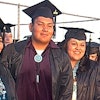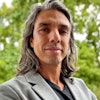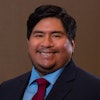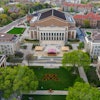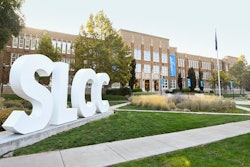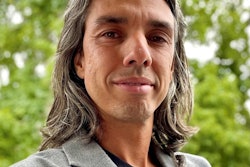Benny Shendo Jr.’s bid for Congress isn’t just a political race. He’s literally running for office touring northern New Mexico on foot and by bike as he seeks votes in a six-way Democratic primary.
The idea came naturally to the former college runner and marathoner, who is campaigning in a district with a greater concentration of American Indian voters than any other.
“Back in the old days, that’s how messages were carried on foot,” said Shendo, a member of the Jemez Pueblo tribe. His message: We’re all in this together.
The 3rd District covers roughly the northern half of New Mexico, with Indians accounting for about 16 percent of the voting-age population. The district has voters from 16 tribes 14 pueblos and parts of the Jicarilla Apache reservation and the huge Navajo Nation.
Shendo, former secretary of Indian affairs for Gov. Bill Richardson, is running for the seat left open by Rep. Tom Udall, who is running for the Senate. If elected, Shendo would be the first Indian to hold the office.
There’s only one Indian in Congress now: Oklahoma Republican Tom Cole, a member of the Chickasaw Nation.
Some Indians have been heavily involved in tribal governments, but the population historically has not participated much in state and federal elections, said Kalyn Free, who leads the Indigenous Democratic Network, which recruits and trains Indian candidates for public office.
American Indians received U.S. citizenship in 1924, but some states refused to let them vote for decades. Indians could not cast ballots in New Mexico or Arizona until 1948 and until 1957 in Utah.
“This is a political system not of our own making,” said Free, a member of the Choctaw Nation who ran for Congress in 2004 from an eastern Oklahoma district.
But, she said, if Indians are “not at the table … our voices are not going to be represented.” Her organization has helped more than 20 Indian Democrats get elected, most of them to state legislatures.
At least two other Native Americans are running in Democratic congressional primaries this year: Diane Benson in Alaska and Mary Kim Titla in Arizona.
With better-known and better-funded candidates in Shendo’s race, he “would have to do some really impressive turnout on the reservations in order to have a shot, which has been … hard in Democratic primaries,” said Albuquerque pollster Brian Sanderoff.
The candidate bills himself as the “real, true progressive” in a field of candidates who offer similar Democratic themes: ending the Iraq war, combating global warming, providing access to affordable health care.
Shendo says his Indian heritage gives him a singular perspective. For instance, his campaign literature points out that he’s no newcomer to being “green.” His people have been practicing sustainability for centuries.
A NAFTA question at a labor forum makes him chuckle, as he points out that his ancestors were trading with Mexico and Central America centuries ago.
“I was raised with the values and traditions that come from my people,” he explained to the labor audience: respect for land, water, animals, elders, families, neighbors, communities.
Shendo managed Native American programs for the University of New Mexico, and was assistant dean of students and director of the American Indian and Alaskan Native program at Stanford University. He was a fellow of the W.K. Kellogg National Leadership Program.
© Copyright 2005 by DiverseEducation.com

